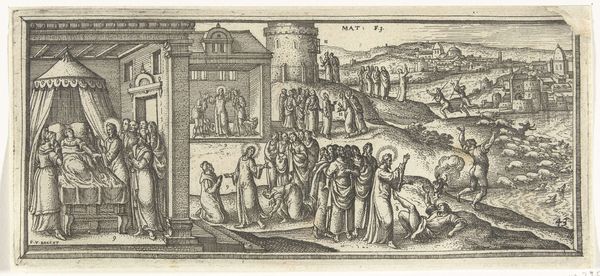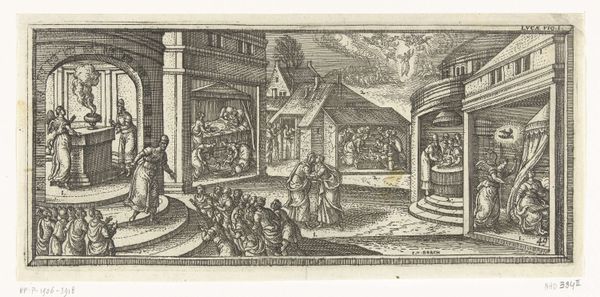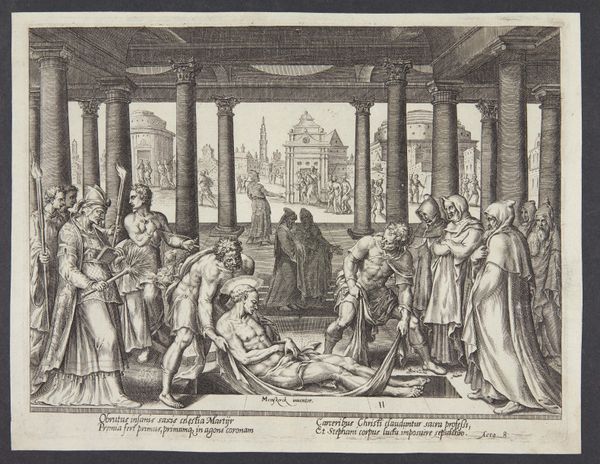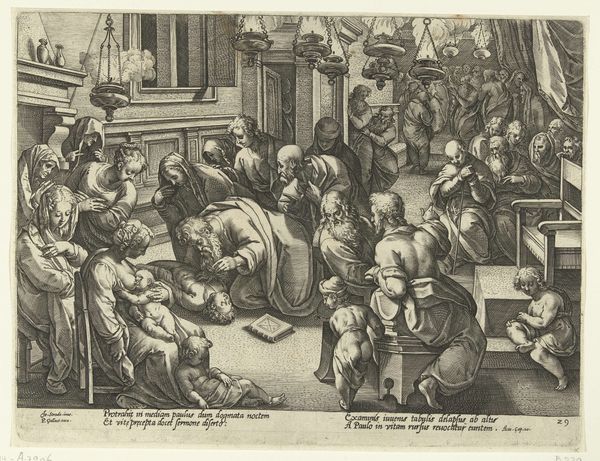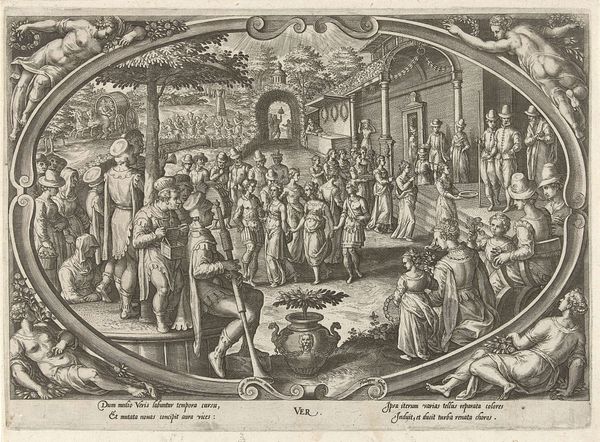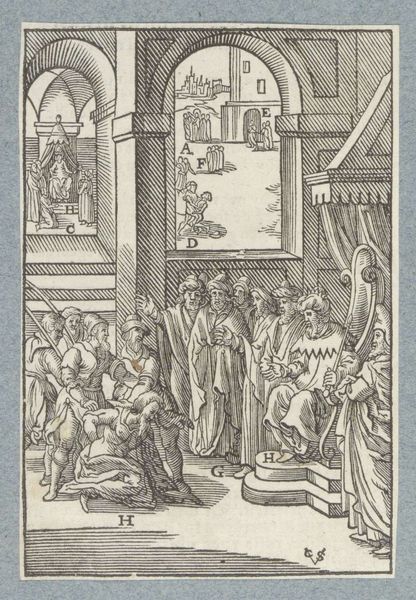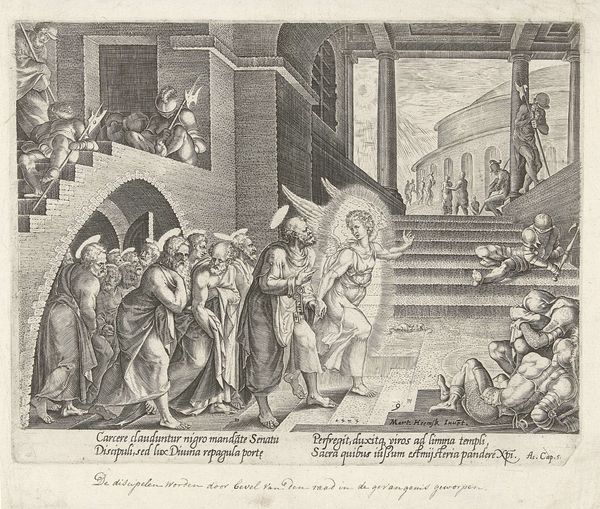
print, engraving
#
narrative-art
#
baroque
#
pen drawing
# print
#
landscape
#
figuration
#
history-painting
#
engraving
Dimensions: height 102 mm, width 226 mm
Copyright: Rijks Museum: Open Domain
This print depicting scenes from the Life of Christ was made by Pieter van der Borcht the Elder, around 1600. It’s an engraving, meaning that the image was incised into a metal plate, probably copper, with a tool called a burin. The process is painstaking, requiring great skill to create those fine, precise lines that define the forms. The plate would have been inked, and then wiped clean, with ink remaining only in the incised lines. Then, paper was laid on the plate and run through a printing press, transferring the image. Engraving like this was an important technology in the early modern period. It allowed for the relatively easy reproduction and dissemination of images, and for the development of a market for prints. This particular print is not unique, but rather part of a series depicting scenes from the Gospel of Luke. The artist must have understood that his labour was part of a wider system of production and consumption. It challenges our notions of what fine art is, and reveals how art is inevitably connected to labor, politics, and consumption.
Comments
No comments
Be the first to comment and join the conversation on the ultimate creative platform.
